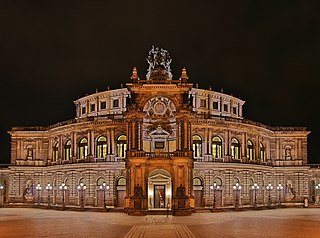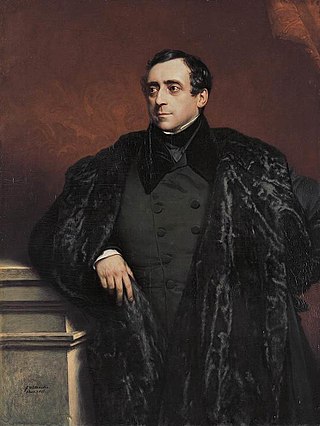
The Sächsische Staatskapelle Dresden,or Saxon State Orchestra Dresden,is one of the oldest orchestras in the world,founded in 1548. It took its present name in 1992,having been known simply as Staatskapelle Dresden during the communist DDR period;a still earlier name was Kurfürstlich-Sächsische und Königlich-Polnische Kapelle,or Electoral Saxon and Royal Polish Orchestra. Created by order of Maurice,Elector of Saxony,it is today a constituent body of the Semper Opera House,along with two choruses and a ballet troupe,where it plays both in the pit for opera and on a platform for its own concert series. It tours regularly and indeed enjoys a strong reputation in symphonic music around the world. Dresden is the capital of Saxony,one of Germany's sixteen states.

The Semperoper is the opera house of the Sächsische Staatsoper Dresden and the concert hall of the Staatskapelle Dresden. It is also home to the Semperoper Ballett. The building is located on the Theaterplatz near the Elbe River in the historic centre of Dresden,Germany.

Moritz Wilhelm,a member of the Saxon House of Wettin,was the second and last Duke of Saxe-Zeitz from 1681 until his death.

Kito Lorenc was a Sorbian writer,lyric poet and translator. He was a grandson of the writer and politician Jakub Lorenc-Zalěski.

Maria Aurora von Spiegel,born Fatima,also referred to as Fatime,Fatima Kariman or Fatima von Kariman,was the Ottoman Turkish mistress of Augustus II the Strong of Poland and Lithuania. Fatima was one of the many Turkish captives during the Battle of Buda. She was brought to the royal courts of Europe,including Sweden,Polish-Lithuanian Commonwealth,and Saxony,and trained as a lady-in-waiting.
Hans Hartmann-McLean was a German sculptor. He studied from 1879 to 1885 at the Dresden Academy of Fine Arts,where his tutors included Johannes Schilling.

Gustav Klemperer von Klemenau (1852–1926),was a prominent German banker. He served as chairman of the Dresdner Bank following the retirement of Eugen Gutmann.

Anton Egon,a member of the Swabian House of Fürstenberg,was Imperial Prince and Princely Landgrave of Fürstenberg-Heiligenberg from 1674 until his death. He also served as governor of the Electorate of Saxony under the Wettin prince-elector Augustus II the Strong.
Karl Friedrich Ludwig von Watzdorf was a Saxon general and diplomat.

Julius Wilhelm Graebner was a German architect. He had his main creative phase in the Dresden architecture firm Schilling &Graebner in the three decades from 1889 until his death.

Georg Rudolf Schilling was a German architect. He was associated with the Dresden architecture firm Schilling &Graebner.
Johann Christian Joseph Seconda was a German actor and director of a travelling opera company.
Klara Elisabeth Karg-Gasterstädt was a German medievalist,professor of German philology at the University of Leipzig and head of the effort to publish the Old High German Dictionary.
Paul Büttner was a German choir director,music critic,music educator and composer of the late Romantic period.

Count Franz Oliver von Jenison-Walworth was a Bavarian politician and diplomat.
Baron Karl Anton Philipp von Werther was a German diplomat. A royal Prussian Privy Councilor and Envoy,later to the North German Confederation and the German Empire,serving in Switzerland,Greece,Denmark,Russia,Austria,France and the Ottoman Empire.
Heinrich von Abendroth was a Saxon lieutenant general and military writer.










